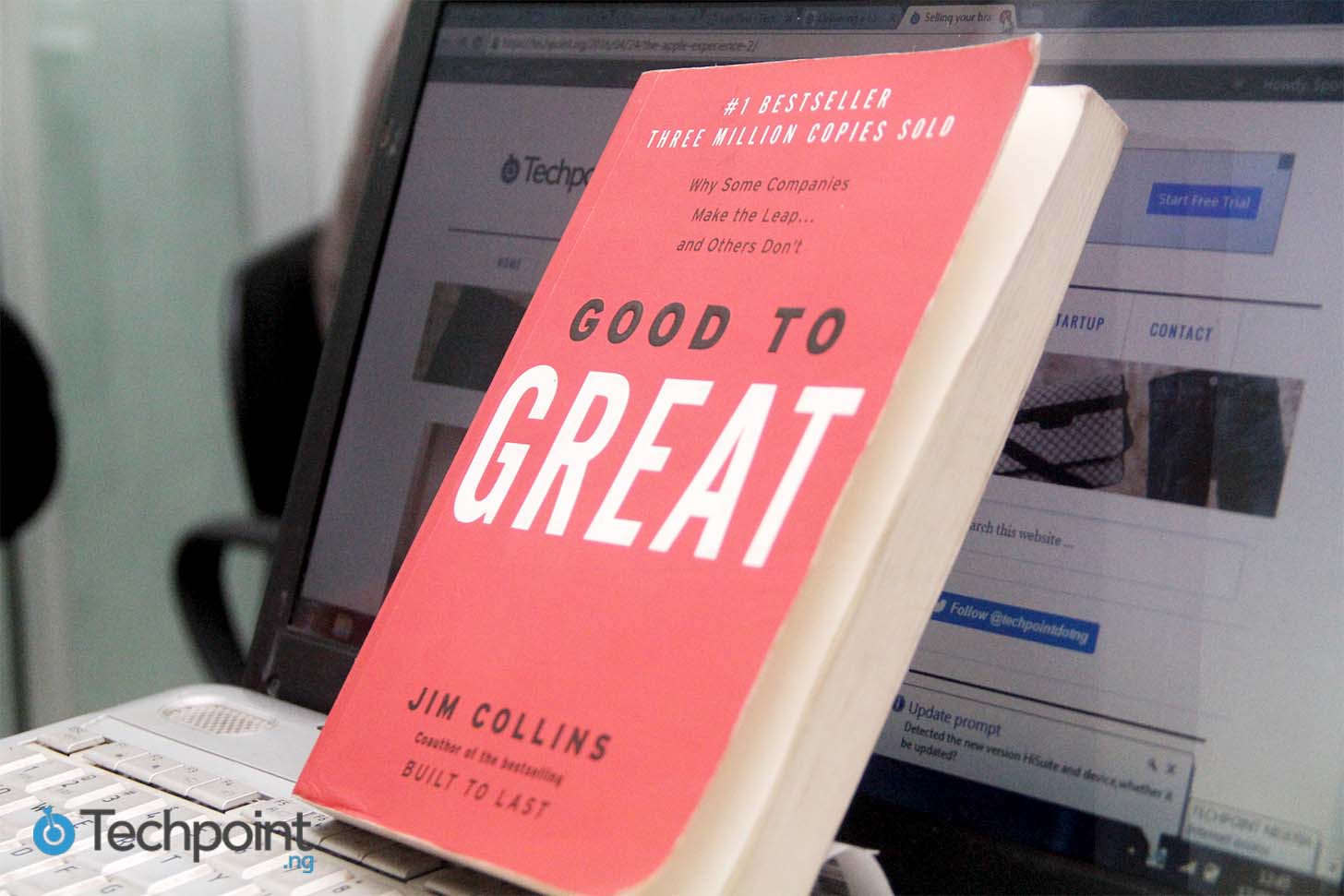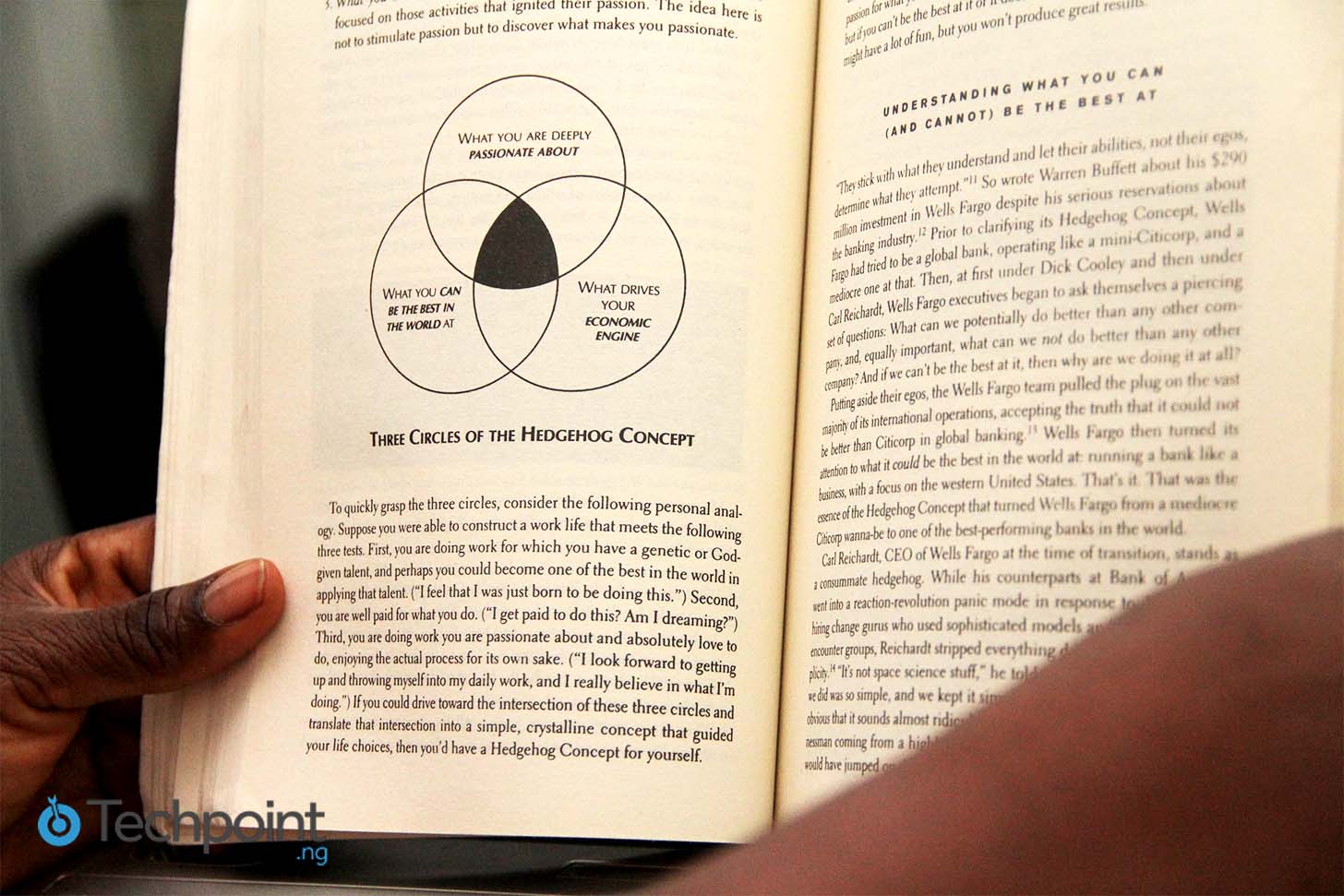The opening of Good to Great seems intimidating with the magnitude of research and background work that has gone into the book. It started with 1,435 good companies, examined their performance over 40 years and found 11 that becomes great.
The Author had a team of 21 people who aggregated about 15,000 hours of work on the project. No wonder this book explores the importance of people to cross the Good to Great mark. Do you remember the Science vs. Myth (made popular by Ander Ericsson & Malcolm Glad well) that says it takes 10,000 hours of practice to become an expert? Probably the hours of work and dedication committed to this book made it a success.
“That good is the enemy of great is not just a business problem, it is a human problem”
A lot of people and businesses settle for relevance, increased profit margin and become good companies thinking that is the best they can be.
However, Jim Collins believes that anything good might become great, ranging from schools, companies, to government agencies.
This book focuses on what to do to become great, what not to do and what to stop doing. Thus, we will focus on the key takeaways as sub headings as they are the important /necessary areas where we need to look at.
The 11 companies were termed to be great based on their extraordinary results; averaging cumulative stock returns 6.9 times the general market in the fifteen years following their transition point.
People
The book places a lot of spotlight on people as drivers of the Good to Great transition. Remember “a great vision without great people is irrelevant,” says Jim Collins.
Starting from the leadership to the team members, he places great emphasis on getting the right people first before even getting a direction for the organization.
This kind of negates what I have always believed i.e get a direction first then get the people onboard but he insists get the right people first and figure out where you are going.
According to the book there are 5 levels of leadership which in turn impacts the performance of every company or organization. All the good to great companies had level 5 leadership at the time of transition.
Who is a level 5 Leader?
- Modest and strong professional will
- Humble & fearless
- They set up successors for success
The good to great leaders never wanted to become larger than life heroes, they never aspired to be put on a pedestal or become unreachable icons. They are seemingly ordinary people quietly producing extraordinary results. They are risk takers willing to push through every obstacle to take the organization forward, never attributing the success to them and the setbacks to the team, they always take responsibility and everyone shares the success.
The saying “People are your most important asset” turns out to be wrong.
People are not your most important asset. The right people are!
The right people have to do more with character traits and innate capabilities than with specific knowledge background or skills.
Hedgehog Concept
Jill Collins explains this concept as an understanding of you knowing what you can be good at and be consistent with it.
The meeting point of the 3 circles (Hedgehog) is actually what makes you become great.
A good to great company set their goals and strategies based on this understanding.
Discipline
This is very important for every company to run well. On the other hand, he says discipline by itself will not produce great results, still laying emphasis on great companies hiring self –disciplined people.
Still on the culture of discipline, every great company in the book had a disciplined resolution to stay within their 3 circle of influence(hedgehog) and not to launch unrelated businesses and concepts. In contrast most of the good companies that did not become great lack a discipline to stay within their circle of influence. He emphasised that it takes discipline to say No, thank you to big opportunities that is irrelevant and does not fit within the hedgehog.
If you have a “to do list” he recommends you need a “stop doing list”. We should not live busy undisciplined lives.
From the perspective of discipline, he brings a different perspective to budgeting “the budget process is not about figuring out how much each activity gets, but determining which activities best support the hedgehog concept and should be fully strengthened and which one should be eliminated entirely”
The greatest lesson here is that as a business, once you know the right thing to do, get the discipline required to do the right thing and stop doing the wrong things.
Disciplined people -> Disciplined Thought -> Disciplined Action
Technology Accelerators
Now this is a tool for talk for techies.
According to Jill Collins, Technology and Tech driven change has virtually nothing to do with igniting a transformation from good to great. When used rightly, Technology becomes an accelerator of momentum, not a creator of it. It is never a primary root cause of either greatness or decline.
A company will become great if it figures out how to apply technology to a coherent concept that reflects an understanding of the hedgehog concept.
He noticed that the good to great companies ignored the hype and fears of a new technology if it does not fit to their circle but if it is relevant; they pursue it fanatically and use it creatively.
The best approach is to maintain a balanced perspective on Technology.
Breakthrough
A single stroke does not fell a tree, it is the momentum built up from the first consistent stroke to the last one. Likewise, the good to great company executives could not pin-point a single key event or moment; rather it is a whole bunch of interlocking pieces that built one upon another.
It might look like overnight success stories to those looking from the outside but the people inside know better.
After pushing on the flywheel in a consistent direction over an extended period of time, they inevitably hit a point of breakthrough.
Every single company goes through the process of build-up to breakthrough.
From Good to Great to Built to Last
The book Good to Great should be a prequel to Built to last which we have already reviewed here and here. Once you have a great organization, do not stop there, become a built to last organization.
Established Company + Good to Great -> Sustained great + Built to -> Enduring great or start-up concepts results last concept company
The extra dimension of enduring greatness for a good to great company is ; Hard core values, build them explicitly into the company and preserve them over time.
Enduring great companies preserve their core value and purpose while their business strategies and operating practices endlessly adapt to a changing world.
Conclusion
After all has been said and done, Jim Collins sums it all up by saying
“It is impossible to have a great life unless it is a meaningful life and it is very difficult to have a meaningful life without meaningful work”
Until next time we meet on #TWBR, take the leap and move from being Good to Great!







